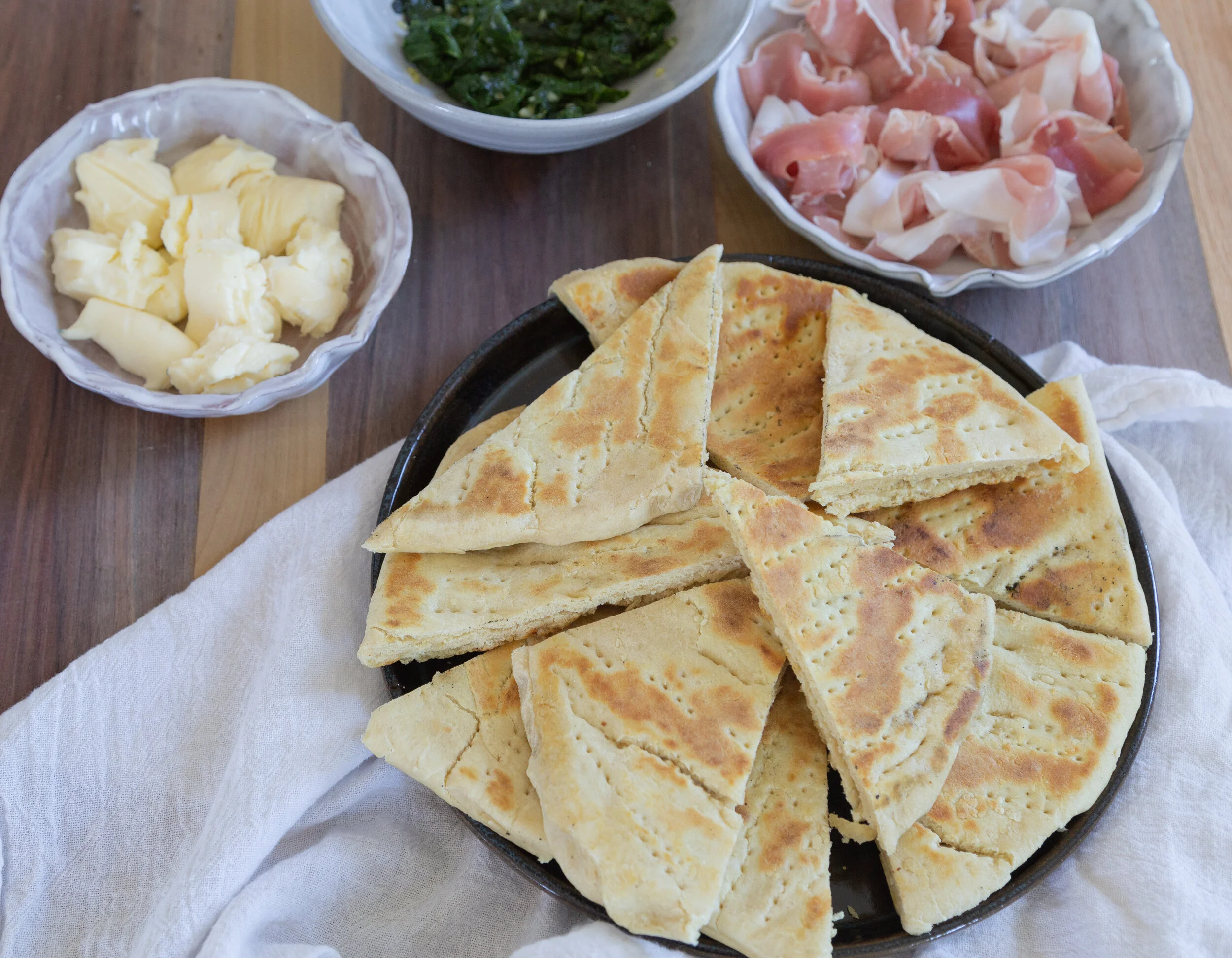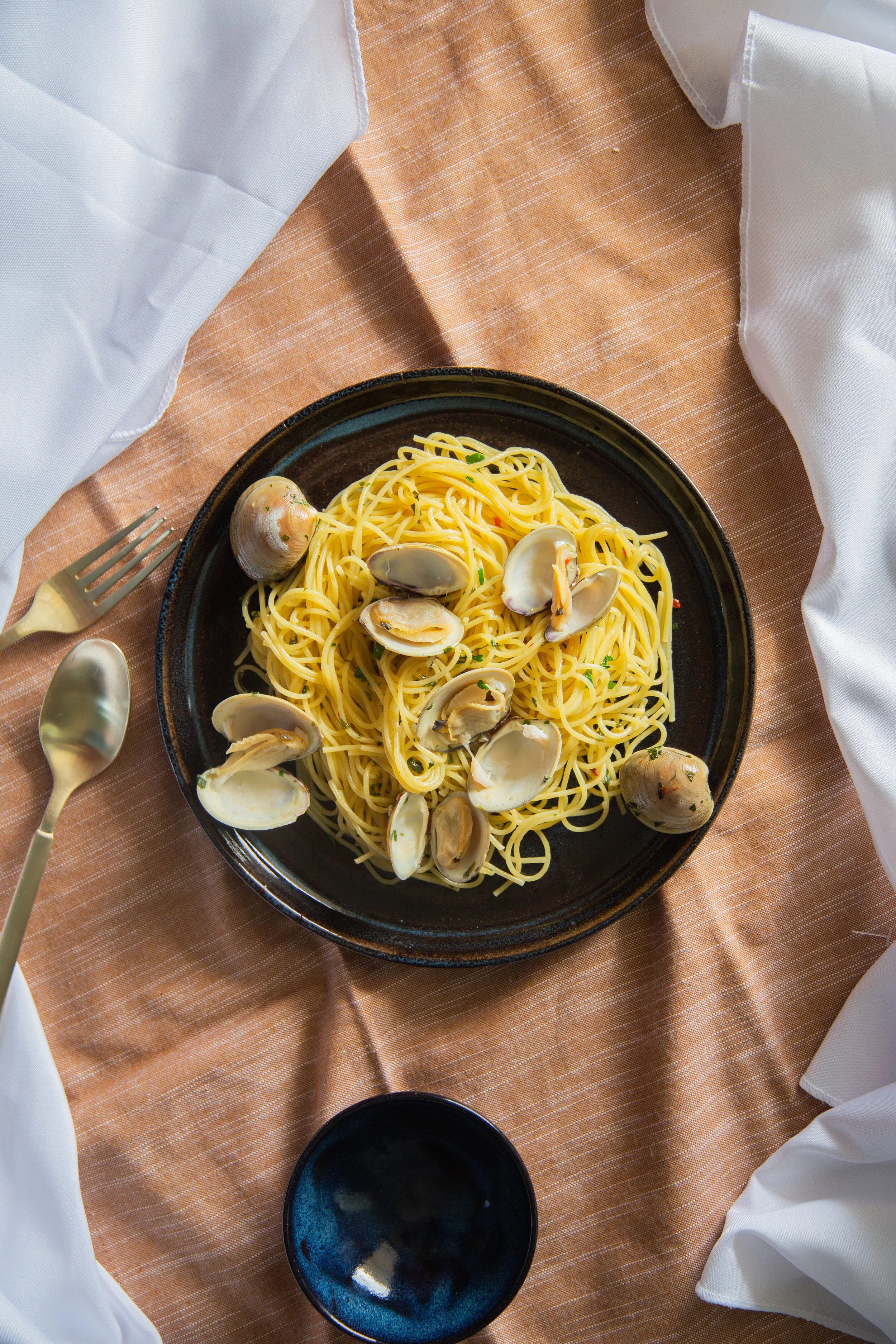Pasta Mollicata & The Ingenuity of Cucina Povera
When taking the time to roam my way through Italy (metaphorically… for now), I knew I’d find myself discovering regions of the country I otherwise knew nothing about. Basilicata is one of those regions.
This mountainous area of Italy is truly a hidden gem of a place, especially in terms of its cooking culture. Turns out, for this week’s blog post I unearthed not only a savory, salty, dream-about-it-the-next-day pasta dish… but also one that demonstrates the region’s deep connection with carbohydrates of multiple varieties and required ingenuity. Pasta Mollicata.
Today, we’re cooking a recipe straight from the region that claims ownership of pasta’s creation in Italy! To explain… Basilicata has always been proud of their bread and their pasta heritage. Grains have been cultivated within the region for centuries (especially durum wheat), making it home of the oldest baking traditions in all of the country. Records show that in 7000 B.C., natives to Basilicata were fermenting their bread in Matera’s cave dwellings over wood fires. Similarly, the earliest chronicles of pasta being made in Italy refer to it being made in the Basilicata region! I mean… that’s a big deal! Even today, Basilicata claims some of the most unique shapes of pasta in the country.
About Pasta Mollicata
Basilicata’s most identifiable pasta dish, pasta mollicata has become a popular one found throughout the south of Italy. But despite the deliciousness of this recipe, it is notoriously known as a “poor man’s dish.” More on this later!
The use of stale bread, a splash of red wine from the cupboard, a spare tomato… pasta mollicata is a true “pantry pasta” that has resourcefulness to thank for its delectability. One’s mollicata is not like the next! Each person’s version is slightly different, altering between personal taste and what’s left to spare in the kitchen.
All that said, there’s one ingredient that must be used if you’re interested in making an authentic mollicata. Let’s get linguistic, shall we?
Mollica - “the soft inside of the bread” explains that the necessary ingredient for the dish - stale bread. Ripped, diced, chunked off into bites… that’s up to you! Pasta and bread are the residing king and queen of this recipe.
A sauce made of onion, a chopped tomato, red wine, olive oil and stale bread, tossed in pasta (bucatini is a good bet!)… topped off with freshly grated cheese and crushed hot peppers. Simple. Resourceful. So good.
Cucina Povera
Compared to other pasta recipes, pasta mollicata is considered a "poor man’s dish” - part of a cultural practice known as cucina povera. Its reliance on a few, simple ingredients and a “waste not, want not” attitude is a prime example of Italy’s frugal, yet delicious, genius.
Translated simply, cucina povera means “poor kitchen” - but it also can be read as “cooking of the poor” or “peasant cooking.” Recipes that fall under this umbrella term make the absolute most of their resources… whether that be a backyard garden, a nearby forest or their fishing boat. Anything unused is given a purpose and never, ever wasted, even down to breadcrumbs and entrails.
Historically, hundreds of years of peasants practiced cucina povera out of necessity, fearing starvation and wanting to make the very most of their crops. But today, we have their humble diligence and resourcefulness to thank for some of the most notoriously famous Italian recipes… from bruschetta to Panzanella to biscotti and more. A great lesson that a meal is so much more than the sum of its parts.
Today, these recipes can teach us a lesson or two. In a world of endless options and direct access to anything imaginable… cucina povera can teach us to waste nothing, spend less, and embrace constraints to discover our inner creativity and make the most of what we’ve got right at home.
Born out of necessity, but brought to life with its salty, savory lusciousness… pasta mollicata is the perfect starter for anyone wanting to practice some of that resourceful attitude right at home.
Pasta Mollicata
Serves 2
1/2 pound of bucatini
Olive oil
5 anchovy fillets in oil, (plus some reserved)
1 chopped onion
2 garlic cloves, minced
1 diced tomato
Ripped stale breadcrumbs
A dash of red wine
Garnish: parsley, grated Pecorino Romano and chili peppers (to taste)
Region: Basilicata
Process
Heavily salt your boiling pasta water, and add your bucatini.
While your pasta is cooking, it’s time to make the sauce! Add a splash of olive oil to a frying pan over medium heat.
When your oil is hot, add your diced onion, minced garlic and anchovies… plus a good splash of that delicious oil from the anchovy jar. No need to dice up your anchovies as they’ll melt and disintegrate into the onion and garlic mixture. Cook until onions are soft and translucent.
Add a splash of your red wine and diced tomato. You may need to turn up your pan’s heat to help the tomatoes soak up the liquids and allow your wine to cook off.
Toss your breadcrumbs into the mixture. You can choose to toast these beforehand, or drop in them in right from the loaf. Your choice!
When your bucatini is al dente, drain and add the pasta to the frying pan. Toss and coat in the sauce.
Serve in a pasta bowl and top with parsley, grated Pecorino Romano and chili peppers to taste.
Enjoy!














